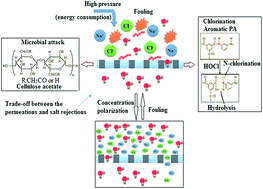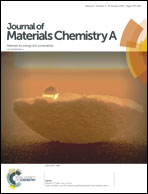Antifouling, fouling release and antimicrobial materials for surface modification of reverse osmosis and nanofiltration membranes†
Abstract
Membrane fouling, which arises from the nonspecific interaction between the membrane surface and foulants, significantly impedes the efficient application of membrane technology. Antifouling and antimicrobial materials are important classes of functional materials for the surface modification of reverse osmosis and nanofiltration membranes. Applications of various organic and inorganic materials having different characteristics such as size, surface charge, hydrophilicity, functionality and biocidal activity, provide protective/sacrificial layers to the membrane surface against different foulants and microorganisms. This review summarizes the properties and applications of organic and inorganic materials, antifouling mechanisms, and surface modification of pre-formed membranes. Materials such as zwitterionic polymers, neutral polymers, polyelectrolytes, amphiphilic polymers, quaternary ammonium polymers, biopolymers, hydrophilic polymers, polydopamine, inorganic salts, and nanomaterials have shown great potential in reducing foulant adhesion and/or proliferative microbial growth on membrane surfaces.

- This article is part of the themed collection: Recent Review Articles


 Please wait while we load your content...
Please wait while we load your content...